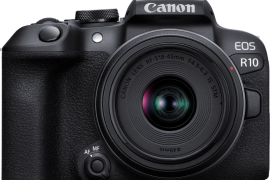Blow-Fill-Seal (BFS) technology has emerged as a cutting-edge method in the pharmaceutical industry for the aseptic packaging of liquid pharmaceuticals. This innovative process integrates three key stages – blow molding, filling, and sealing – into a seamless operation, ensuring the production of sterile and tamper-evident containers for a variety of pharmaceutical formulations.
The Blow Fill Seal Process
1. Blow Molding:
The BFS process initiates with the creation of a container through blow molding. A polymer resin is extruded to form a hollow tube, which is then molded into the desired shape using compressed air. This step allows for the customization of container shapes and sizes, providing flexibility to pharmaceutical manufacturers.
2. Filling:
Once the container is molded, it moves to the filling stage. This is where the pharmaceutical product is precisely dispensed into the container under aseptic conditions. The BFS technology ensures minimal exposure to external contaminants, maintaining the integrity and sterility of the drug.
3. Sealing:
After filling, the container is sealed in a continuous, automated process. The seamless integration of these three steps significantly reduces the risk of contamination, making BFS a preferred choice for pharmaceutical packaging in sterile environments.
Advantages of Blow-Fill-Seal Technology:
1. Aseptic Production:
BFS technology is renowned for its aseptic capabilities. The entire process takes place within a controlled environment, minimizing the risk of microbial contamination. This is crucial for pharmaceuticals that require high levels of sterility.
2. Cost-Efficiency:
The continuous and automated nature of BFS production results in reduced manual intervention and, consequently, lower labor costs. Additionally, the elimination of the need for pre-formed containers contributes to material savings.
3. Versatility:
BFS technology is versatile, accommodating various container shapes and sizes. This flexibility is beneficial for pharmaceutical companies looking to differentiate their products in the market.
4. Tamper-Evident Packaging:
The sealing process in BFS ensures tamper-evident packaging, instilling confidence in consumers about the safety and authenticity of the pharmaceutical product.
BFS Machine: The Heart of Blow-Fill-Seal Production
At the core of the Blow-Fill-Seal process is the BFS machine. This sophisticated equipment integrates precision engineering to execute the three key stages seamlessly. From mold design and material extrusion to filling accuracy and sealing integrity, the BFS machine plays a pivotal role in ensuring the efficiency and reliability of the entire process.
In conclusion, Blow-Fill-Seal technology has become a cornerstone in pharmaceutical packaging, offering a combination of aseptic assurance, cost-effectiveness, and versatility. The BFS machine, as the linchpin of this process, exemplifies the marriage of technology and pharmaceutical innovation, paving the way for safer and more efficient drug delivery systems.
Applications of Blow-Fill-Seal Technology:
1. Liquid Pharmaceuticals:
BFS is widely used for packaging liquid pharmaceuticals such as sterile solutions, suspensions, and nasal sprays. The aseptic conditions provided by the technology are critical for maintaining the efficacy of these formulations.
2. Ophthalmic Products:
The precise control over container design and the sterile environment make BFS an ideal choice for packaging ophthalmic products like eye drops. The technology ensures that these sensitive formulations remain free from contaminants.
3. Respiratory Medications:
Inhalation solutions and respiratory medications benefit from BFS packaging due to the technology’s ability to maintain the integrity of these formulations in a sterile environment, crucial for patients with respiratory conditions.
4. Biotech and Biosimilar Products:
As the pharmaceutical industry delves deeper into biotechnology and biosimilar products, BFS technology offers a reliable solution for packaging these complex formulations, ensuring sterility and product stability.
Ongoing Advancements in Blow-Fill-Seal:
The pharmaceutical industry is witnessing continuous advancements in BFS technology, driven by the demand for enhanced efficiency and sustainability. Some notable trends include:
1. Single-Use Technology:
The adoption of single-use BFS systems eliminates the need for cleaning and sterilization between batches, streamlining the manufacturing process and reducing the risk of cross-contamination.
2. Integration of Smart Technologies:
The incorporation of smart technologies, such as sensors and monitoring systems, enhances the control and real-time monitoring of the BFS process. This contributes to increased reliability and quality assurance.
3. Focus on Sustainability:
Pharmaceutical companies are increasingly exploring sustainable materials for BFS packaging, aligning with the industry’s growing emphasis on eco-friendly practices.
Challenges and Future Outlook:
While BFS technology offers numerous benefits, challenges such as regulatory compliance, especially in different regions, and the initial capital investment required for BFS machines should be considered. However, the industry’s commitment to addressing these challenges, coupled with the continuous evolution of BFS technology, suggests a promising future for this innovative packaging method.
In conclusion, Blow-Fill-Seal technology has not only transformed pharmaceutical packaging but continues to evolve, meeting the demands of an ever-changing industry. With its proven track record in ensuring aseptic conditions, cost-effectiveness, and adaptability to diverse formulations, BFS stands as a testament to the pharmaceutical sector’s dedication to advancing patient safety and product quality. The BFS machine remains at the forefront of this evolution, driving the industry towards a future where pharmaceutical packaging is not just a necessity but a strategic component of healthcare delivery.


